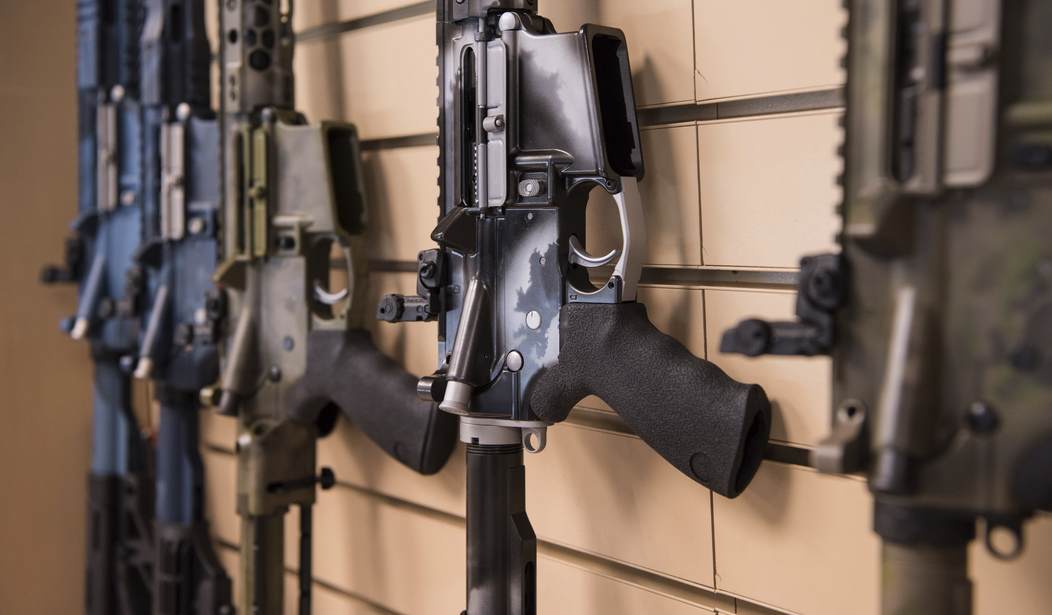Second Amendment attorneys (and frequent Bearing Arms Cam & Co guests) Chuck Michel and Kostas Moros are veterans at challenging unconstitutional restrictions on our right to keep and bear arms in court, but their latest defense of our Second Amendment rights can be found in the Wyoming Law Review, where the pair offer up the "historical case against assault weapon bans."
As the gun control lobby works to enact sweeping semi-auto bans at both the state and federal level (unsuccessfully, thankfully, in New Mexico this session despite Gov. Michelle Lujan Grisham's push to ban gas-operated semi-automatic rifles), Michel and Moros's article is both a timely reminder that the generation of Americans who enshrined the right to keep and bear arms in our Constitution would never have accepted these infringements, as well as a wonderful bit of scholarship that will hopefully have an impact on court decisions going forward... including at the Supreme Court, where justices will soon consider multiple requests to take up "assault weapon" ban cases out of Illinois and Maryland.
We've seen several courts around the country conclude that AR-15s and other modern sporting rifles aren't protected by the Second Amendment; they're too similar to machine guns, that only arms most commonly used for self-defense are covered, and that any and all arms that could be useful in a military setting are beyond the scope of the right to keep and bear arms, to give just a few examples. As Michel and Moros argue, however, the national tradition of the right to keep and bear arms undoubtedly includes both the right of individual self-defense as well as the right to resist tyranny. "Simply put," they write, "this Article examines American historical tradition to show that the commonly owned civilian firearms of the era that are also optimal in warfare are the most protected of all when it comes to firearm regulation."
Here are a few examples brought forward by the pair:
Tench Coxe, a friend of Madison and himself a delegate to theConstitutional Convention, in discussing the Second Amendment, wrote “civil rulers . . . may attempt to tyrannize,” and rulers might use the power of the military to injure fellow citizens, thus, “the people are confirmed by the article in their right to keep and bear their private arms.” He had earlier also written that “Congress ha[s] no power to disarm the militia. Their swords, and every other terrible implement of the soldier, are the birthright of an American.”
Noah Webster, the famous early American lexicographer and a member of the Connecticut House of Representatives from 1802–1807, was also a strong advocate for adoption of the United States Constitution. He wrote, “[b]efore a standing army can rule, the people must be disarmed; as they are in almost every kingdom of Europe.” Unlike in Europe, the United States is less susceptible to tyrants enforcing unjust laws “because the whole body of the people are armed, and constitute a force superior to any band of regular troops that can be, on any pretense, raised in the United States.”
William Patterson, who held many positions of power in the founding era resulting in him being one of the first Associate Justices of the Supreme Court from 1793 until his death in 1806, wrote a militia is “the people themselves prepared to act as soldiers for the purpose of resisting oppression and securing their rights. . . . Tyrants dread freemen, when freeman not only have arms in their hands, but know how to use them.”
That understanding of the Second Amendment was alive and well in the 19th century too. Even as multi-shot firearms became the norm, dramatically increasing the rate of fire from the days of muskets and muzzleloaders, calls for prohibiting civilians from possessing the newfangled arms adopted by the military were virtually non-existent. As the pair write, "no state outright banned lever-action rifles or revolvers."
Undoubtedly, the fact that the most clearly analogous firearms to modern rifles went almost entirely unregulated in the 19th century is a major problem for “assault weapon” bans under Bruen. That is why states like California compare their contemporary rifle bans to 19th-century restrictions pertaining to Bowie knives and small pistols. Unlike the repeating rifles of the era, these weapons were regulated in some limited ways, a fact hostile courts have relied on to uphold rifle bans. One district court in the Northern District of Illinois stated that laws governed the most dangerous weapons of the era, including Bowie knives.
The trouble with the suggestion that common rifle bans are like historical Bowie knife restrictions is that those who lived in the 19th century would have rejected that comparison. Americans from this era were not silent, and indeed wrote quite a bit about this topic. While there was some disagreement at the time about the scope of the individual right the Second Amendment protects, the available commentary largely agrees the “arms of modern warfare” were the most protected type of weapon of all.
Anti-gunners have been trying to rewrite history to suit their purposes for decades now, and the "text, history, and tradition" test spelled out by the Supreme Court in Bruen has made that an even more important endeavor for those who want to strip us of our Second Amendment rights. Michael and Moros's scholarly contribution to the debate is well-timed and a welcome dose of historical facts that will leave gun control activists gritting their teeth in frustration, while arming both Second Amendment advocates and impartial judges with the knowledge they need to overturn these modern bans on "assault weapons" that lie far outside our national tradition of keeping and bearing arms in defense of ourselves and to guard against the establishment of government tyranny.








Join the conversation as a VIP Member